Spring 2024




It is hard to believe that the long winter is over, and baseball is back!
I was lucky to spend a week in Phoenix in March to attend the NINE Spring Training and SABR Analytics conferences. At the NINE banquet, SABR presents the Seymour Medal, honoring the best book of baseball history or biography published during the preceding calendar year. This year, our own Steve Gietschier was awarded it for his book Baseball: The Turbulent Midcentury Years. It was an honor to hear Steve's speech, which reflected on his writing of the book using the innings of a game as a metaphor and seeing him immortalized with all the fantastic authors who have previously won the award.
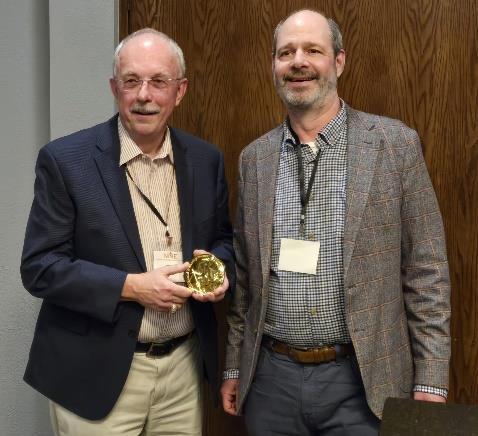

Our feature article is a compilation of thoughts and memories of opening days from the past, submitted by eight of our chapter members all with different perspectives – everything from skipping school to attend, to working in the manual scoreboard.
A message from the President
Opening day memories
Hot Stove luncheon on SABR Day
Book review: Runnin’Redbirds
Elmer Gedeon and the Wolverines
Biggest Browns fan in Arizona
Predictions for 2024
St. Louis Cardinals
Allison Levin p1
Eight chapter members p3
Brian Flaspoehler p10
Bob Giovanni p12
Rick Zucker p13
Jeff Huelster p15
Major League Baseball


Across town from NINE, SABR held the Analytics conference, which, as always, was a joy to attend. The conference started with Brian Kenny's opening remarks on the state of analytics and then jumped into panels and research presentations covering a wide range of topics. I enjoyed seeing the incredible research people are doing, especially in biomechanics. The analysis being done of automatic
Jeremy’s over/unders p17 p20 p21
Photo Credits p22
balls and strikes vs the challenge system was also eye-opening.
Among the panels, I particularly enjoyed the two held on the impact of the rule changes. For the pitching and baserunning panel, we heard from Vince Gennaro of SABR, Eno Sarris of the Athletic, former MLB pitcher Javy Guerra, and moderator
Rob Mains of Baseball Prospectus. The next day, panelists Meg Rowley of FanGraphs, Mark Simon of
SIS, and former MLB player Bobby Scales of SIS were joined by moderator Brian Kenny to discuss the hitting and defensive changes. Both panels indicated they were surprised by how seamlessly the rule changes integrated into the game.
In the panel on hitting and defense, Brian Kenny received jeering from the crowd when he suggested that MLB should take one additional step and deaden the baseball. Given the expertise on both panels, everyone came away understanding the numbers as well as the player's perspective on last year's changes and what is coming down the line. I always enjoy the Baseball Savant panel, where they show what they added last year and what is coming for this season. They showed off some amazing bat-tracking technology that is coming online soon, and they will add even more weather tracking and adjustments.
The real highlight of the conference for me - and most attendees - was the Baseball Prospectus founders panel. The audience got the full story of how they went from UseNet friends to creating a website that has persevered for nearly 30 years. With Clay Davenport, Gary Huckabay, Rany Jazayerli, Christina Kahrl, and Joe Sheehan all in the same room, the stories were terrific, and with moderator Will Carroll joining the conversation, it was one of the best panels I have ever seen at a SABR Analytics conference.


Now that analytics has passed, it is time to start thinking about the upcoming SABR conferences. The Jerry Malloy Negro Leagues conference will be held June 6-9 in Cooperstown. The new Black Baseball exhibit at the Hall will add to attendees' experience. Then there is SABR 52 being held August 7-11 in Minneapolis. SABR has already announced that FOUR Hall of Famers will be onhand to speak, soonecanonlyimaginewhatelsewillbeannounced. Information on both can be found at SABR.org/events.
SABR also announced that Shakeia Taylor will be returning this summer with Ballpark Figures in a podcast format, telling the Stories of the Negro Leagues. If you had the opportunity to watch her monthly show, it's hard to imagine this podcast being anything less than exceptional.
At the National level, elections for the Board of Directors are coming up. Watch your email for the voters' guide, which I encourage you to read and use to decide who should help guide the organization. Several weeks after receiving the voters' guide, you will receive an email with instructions on voting. Please consider casting your vote this year.
[Editor’s Note: In addition to being our Chapter President, Allison has served on the National Board of Directors since 2019. This year she will be on the national ballot as a candidate for Vice President!]
Atthelocal level, we continueto meet monthly at the Sports Café for our formal meeting, which begins at 6 pm. We generally have a speaker for the first 45 minutes of the meeting. Then, for the remaining hour and 15 minutes, we have presentations from local members and discussions of current topics in baseball. The meetings always end with trivia. Everyone is welcome, and all are encouraged to try out a meeting. You can find the dates on our chapter page at SABR.org. On the first Wednesday of each month, we also host a fellowship meeting at Lester's inLadue,withpeoplearrivingbetween5:00 and5:30 pm. The fellowship meeting is a time to have dinner with fellow baseball fans and discuss the game. The dates are also listed on our SABR.org page, and it is recommended that you email Brian Flaspohler at brianflash100@gmail.com to get on the mailing list, as the location changes from time to time.
As always, it is my pleasure to act as your chapter President. If you have any questions, speaker suggestions, or comments, do not hesitate to email me at allison.levin@gmail.com
Go Cardinals!
Allison
Opening Day in St. Louis is more than a baseball game; it’s a tradition. When a Cardinals fan thinks of thehomeopener,theyprobablythinkofClydesdales, Red Jacket Hall of Famers, backflips, pep rallies at Kiener Plaza, and lots of red.
Eight members of the Bob Broeg SABR chapter share their experiences and memories of an opening day game at Busch Stadium. These nine games (Bob Tiemann submitted two games with a special
connection) give a variety of thoughts and perspectives ofaspecialevent in St. Louisthatmarks the beginning of a seven-month love affair between Cardinals fans and their team.
Thank you to Rick Zucker, Jeff Copeland, Bob Tiemann, Morris Buenemann, Mark Stangl, Jeremy Gibbs, Eric Vickery, and Bill Marston for contributing their recollections.
April 5, 1974
By Rick ZuckerFifty years ago, the Cardinals opened the 1974 season against the Pittsburgh Pirates on a cold Friday night, April 5, at Busch Stadium II. The Cardinals ultimately prevailed in a game that featured a bizarre and controversial 10th inning. My ticket stub shows that I was sitting down the first base line in the Loge Reserved, the first deck up from the box seats.
Bob Gibson, in his penultimate season, was the Cardinals’ starter. Mike Tyson, hitting in the 8th spot, was the Cardinal shortstop. Batting and playing in those positions for the Pirates were two St. Louisans and former Cardinals, pitcher Jerry Reuss and shortstop Dal Maxvill.
The Pirates opened the scoring with two runs in the third inning when Maxvill led off with a single to center off Gibson, and Richie Hebner hit a twoout, two-run homer. The Cardinals answered with three in the bottom of the inning. To the crowd’s great delight, newly-acquired Redbird Reggie Smith doubled in two runs. The fans even cheered him after he made a baserunningmistake, getting thrown out at third on a grounder to short by Torre.

ThePiratestied thescore in theseventh on asacrifice fly by Ed Kirkpatrick, pinch-hitting for Maxvill. The Cardsimmediately retook theleadin thebottom half, 4-3,ontheirownsac fly byrookiecenterfielderBake McBride, following a Ted Simmons triple. McBride would add two singles and a double on his way to being named the 1974 NL Rookie of the Year. Reuss finished the inning and departed the game. In seven innings, Reuss surrendered five walks, nine singles, two doubles, and a triple, but only four runs. He was replaced by another former Cardinal, Dave Giusti.
Reuss got offthehook whenHebnerhit his second homer off Gibson to lead off the eighth. Gibby got a no-decision, pitching eight innings, yielding four runs, three earned, on eight hits. He walked none, hit two,and struckout three, givinghim 2,928 for his career. All three earned runs came on Hebner’s two homers. Gibson would be touched for 24 homers that year, the most in the NL.


The score was still 4-4 into the 10th. With Al Hrabosky pitching, Hebner doubled to right, his third extra-base hit of the game, and Stargell singled to give the Pirates a 54 lead.

As they had in the third and seventh innings, the Cardinals were ready with an answer. McBride led off against Giusti with a successful drag bunt. Reitz failed on two sacrifice bunt attempts, but Mr. April then slapped his third hit of the day to right field, sending the speedy McBride to third. Young Jim Dwyer, from SIU-Carbondale, pinch ran for Reitz. Tim McCarverpinch hit forTyson,andgot an infield hit, scoring McBride with the tying run. Jose Cruz, pinch hitting for Hrabosky, managed a bunt single, loading the bases with nobody out. The Pirate infield and outfield both moved in to prepare for a play at the plate. Brock lined what would normally be a clean single to right, but Pirate right fielder
Gene Clines, playing shallow, made a shoestring catch. Or did he? Cardinal runners scrambled back to their bases, but Clines, who had actually short-hopped, or trapped, the ball threw home to catcher
Mike Ryan, who threw to Hebner at third, who threw to Rennie Stennett at second. Meanwhile, Brock and Cruz both stood on first.
The Pirates appeared to tag all relevant players and bases andturned thematteroverto thearbiters. Inthe ensuing confusion, Cruz meandered down to second base unnoticed. In reality, it should have been an inning-ending triple play, scored 9-2-5-4, sending the tied game into the 11th inning. After a long consultation, however, the umpires confirmed that Clines had trapped the ball, that Dwyer was forced out at home, that McCarver was forced out at third, but that Stennett had never stepped on second, so when Cruz reached second, he did so safely. The
Pirates were outraged. In the end Brock had hit into a 9-2-5 double play, and the Cardinals now had runners on first and second with two outs. Ted SizemorethenlinedtheCardinals 18th hit ofthenight to left field, driving in Cruz for a 6-5 winner.
The Cardinals ended the night with 18 hits and five walks. The Pirates had 10 hits and two HBPs. Even with 35 baserunners, 10 innings, and an umpires’ meeting, the game was played in 2:36 before 24,210 chilled but happy fans, including me. The Pirates would go on to win the NL East, edging out the second-place Cardinals by 1½ games.

Ironically, on the same day that the Pirates took a one-run lead into the bottom of a 10th inning that featured an outfielder’s noncatch,tworunsscored and a win for the home team, Fred Snodgrass passed away at age 86. A solid centerfielder for the New York Giants, Fred was unfortunately best known for what was called “Snodgrass’ muff.” With the Giants holding a onerun lead at Fenway Park in the bottom of the 10th inning of the deciding game of the 1912 World Series, Fred dropped a fly ball. His non-catch ultimately led to two Boston runs and a World Series win for the home team.
In addition to my own memory, I used Baseballreference.com and the St. Louis Post-Dispatch.
April 10, 1980
By Jeff CopelandMy pal Rod Brewer and I ditched our classes at Mizzou on April 10, 1980, and drove two and a half
hours in his 1962 Ford Galaxy, stopping to add oil twice (that poor thing smoked like a mosquito
sprayer), to Busch Stadium for the home opener. It was a gorgeous day, bright sunshine, high 60’s, and a packed house of over 40,000 eager fans. We had high hopes for the 1980 team. The decade of the 70’s had been a nightmare for St. Louis fans, but optimism filled the air as the new decade began, in large part because the Cards had acquired slugger Bobby Bonds over the winter to replace recently retired and Hall-of-Fame-bound Lou Brock. The addition of Bonds gave the Cardinals what we hoped would be our own Murderer’s Row. We now had a lineup that would start with Templeton and Oberkfell, both fine hitters who would get on base in front of this middle part of the lineup: Hernandez, Simmons, Bonds, and Hendrick. The previous year Hernandez was the Co-MVP with Willie Stargel, Simmons had smashed 26 homers, and Hendrick had hit .300 with 16 round-trippers. Putting Bonds behind Simmons and having Hendrick in the wings to protect him gave us visions of a power lineup that would clobber the rest of the league.
As Bonds came to bat for the first time that day, Cardinal fans rose in unison for a standing ovation. He walked and another ovation rang out. George Hendrick then drilled a double down into theleftfieldcorner,and Bondscameallthe way around to score what ended up being the only Cardinal run of the day. That was enough because Cards starter Pete Vuckovich pitched a masterful complete-game shutout in a crisp one hour and fiftyone minutes. We didn’t care that Bonds went down swinging in his other two plate appearances, the second time chasing a fastball over his head. Each time he struck out, an “ooohhh!” rang through the stands, as if saying, “He just missed a homer!” At the end of the game, instead of talking about Vuckovich’s gem, Rod and I talked all the way back to Columbia about what Bonds was going to add to the team.
It turned out it wasn’t much. Just over a week later, he was hit on the wrist, and the injury was such that his power days were sadly and suddenly over with the Cardinals. He’d hit just five homers that season, with a batting average right at the Mendoza-line. The Cards ended up with five .300 hitters that year, and SimmonsandHendrickeachhadover20homers, but the team never did jell like we all expected. Much of thatwas dueto apitching staffofVuckovich, Forsch, Bob Sykes, Silvio Martinez, and John Fulgham. The latter three combined for a 15-26 record that year. The team started so poorly that after just over fifty games the team was in a distant last place, and Ken Boyer,the“Captain”andheroofourchildhoods,was fired as manager. He was replaced by some guy called “Whitey” Herzog, whoever that was. Little did we know at the time that Mr. Herzog would make the decade of the 80’s a very special one for St. Louis. And Bonds? He never did fully recover from the wrist injury. The next year he played in 45 games for the Cubs, hit .215 with 6 homers and was finished.

5
ThatApril10,1980,openerisstillthe most excited I’ve ever been for the start of a season. After enduring a decade in which the Cards’ rosters were peppered with the likes of Scipio Spinks, Luis Melendez, Jerry McNertney, Hector Cruz, Pete Falcone, Al Santorini, and Eric (“Don’t call meHarry!”) Rasmussen, adding BobbyBonds to an already pretty darn good hitting lineup seemed to add what would put the team over the top. It didn’t, but, ah, what a memorable day April 10th was a day I’ll never forget.
**Thanks to Baseball-Almanac for the statistics I couldn’t recall.
April 9, 1990 and April 8, 1997
By Bob TiemannHaving attended all but a handful of Cardinal Home Openers in the last 40 years, I’ve got lots of memories. Two walk-off wins stand out in particular because the same hero got the decisive hit in both the 1990 and 1997 Home Openers.
In 1990 Spring Training had been delayed by a month-long lockout, so the start of the regular season was pushed back to April 9th On that Monday, Montreal was the visiting team at round downtown Busch Stadium before an eager full house, with Joe Magrane pitching versus Dennis Martinez. It was a nice spring afternoon, and a backflip by Ozzie highlighted the usual Opening Day festivities. I attended with many drinking buddies from Kevin Magee’s Bar in a convoy of two chartered school buses.


We had a “No Wave Rule” in our section, which was several rows under the arches in the upper 330s (high right field). Our home nine got out to an early lead, but a botched fly ball by Milt Thompson help the Expos to a lead, 5-3, going into the bottom of the 9th Thompson walked with one gone, and Vince Coleman dumped a double down the left field line to put the tying runs into scoring position. Willie also swatted an opposite-field double into the corner to knot the score.
Thompson walked again in the 11th, and Coleman had buntedhim over. Williethenmade it ahappybus ride back to the bar with a soft liner that fell safely into center field as Milt motored home with the winning run.
In 1997 Willie walked off the Expos again seven Home Openers later. The feeling at the game was
altogether different. Now sitting in Section 250, directly behind home plate, I was glad not to be in the upper deck that day. The temperature was in the low 40s and dropping with a snowstorm blowing in from over the river. After the Cardinals had won the NL Central in 1996, La Russa had boasted that they were sure to win it again in ’97. Oops. The Cardinals opened the season with 3 losses in Montreal and added 3 more Ls in Houston.
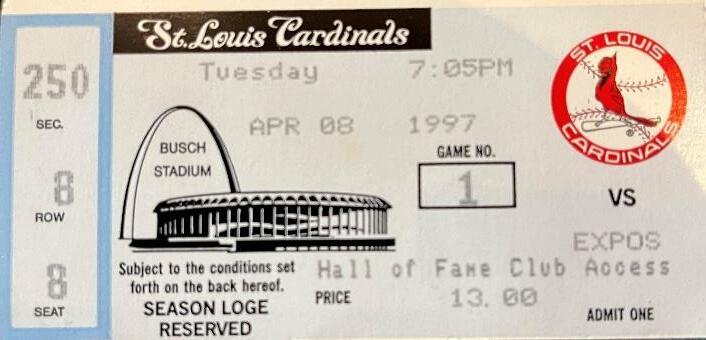
This was the first official No Backflip Opener, and the shivering multitude was watching an 0-6 team. Frozen batters made for few hits, so the game went quickly until it was 1-1 in the 9th. The cold had already winnowed the crowd, and now extra innings loomed. A chilling thought. The ‘Spos went down easy in the top of the (maybe) last. But so did the first twoCardinal hitters. Tony sent Williein to pinchhit. McGee was wobbling on an injured leg and was not going to be legging out any triples like in the previous decade. Not to worry. Ugueth Urbina startedwith a high changeup,and Williestraightened up and slammed it into the wind but with just enough power to get it over the right field wall for a gameending home run. The hero limped around the bases to celebrating teammates at home plate, while the adoring St. Louis fans cheered like crazy.
Glory Be to Willie McGee! The Cardinals had actually won a game, and we could all come in out of the cold to celebrate! (The next game was snowed out.)
March 31, 1998
By Morris Buenemann, Jr.As I had done for several years, I attended the afternoon opener against the Dodgers with a number of friends from work. We all worked a half day then headed downtown to Kiener Plaza to join other fans for a little fun before the game. The weather was pretty decent for March 31, mixed sun and clouds and about 60 degrees, but with a pretty good breeze around 15 mph.
The Cardinals’ Opening Day starter was Todd Stottlemyre and our catcher was Tom Lampkin, who I now barely remember. The Dodgers started Ramon Martinez. Other than the fact that we beat the Dodgers, 6-0, behind strong pitching by Stottlemyre, I don’t have a lot of specific memories from that game, except for one play. Of course, that play was the grand slam hit by Mark McGwire to provide Todd and the Cardinals with all the run support they needed.
Neither team had been able to score in the first 4 innings, but according to my scorecard Gaetti led off the bottom of the fifth with a double, followed by a single to left by catcher Lampkin, putting runners on first and third with none out. Following Ks by both Stottlemyer and lead-off hitter Royce Clayton, a two out walk to Delino DeShields brought up McGwire with the bases loaded.
When Mark hit the ball, I initially thought it was just a high fly ball to LF, the ball reaching an elevation
higher than our seats on the first-base side of Terrace Reserve. Having seen a lot of games in that stadium, often sitting up high in “general admission” seats (last seven rows of Terrace Reserve), I had seen that balls hit that high normally stayed in the park, having been launched too high with not enough forward momentum to carry them out. But that was not the case with McGwire’s drive. I knew the wind was blowing out to left, and I’m sure that helped, but I was still surprised to see the ball carry into the seats in left for a grand slam!
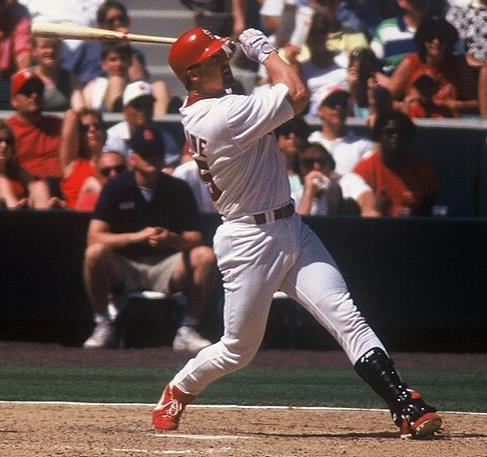

In addition to providing the margin of victory, it was the first home run of what would be an historic season for Mark, as he went on to break Roger Maris’s single-season home run record. I was lucky enough to also be at game number 162 that season, against Montreal, when Mark hit two home runs, numbers 69 and 70 to set the new standard, though it would last just three years.
April 5, 2004
By Mark StanglFrom 1998-2005, I had the privilege of being an employee of the Cardinals as one of their Manual Scoreboard Operators or Manual Scoreboard Guys (MSGs).
During that time, I got to witness many historic
events and be part of that history. For example, Mark McGwire's record-breaking 62nd home run on 9-81998, not only did I get to see it, but I also helped put in the #62 on the board. I was also present for the celebration of Jack Buck's life in June 2002, the playoffs in 2000, 2001, 2002, 2004, the World Series
in 2004 (which I have tried to forget), and the final game at Busch II in October 2005.
Probably the most unique Opening Day during my tenure was April 5, 2004. The reason? President George W. Bush was in the house to throw out the first pitch. I assumed it was because he knew Bill DeWitt Jr through their co-ownership of the Texas Rangersfrom 1989-1994. But in any event, President Bush was there that day. Because of the President's appearance, Secret Service and other security measures were implemented. There had been protests outside the stadium criticizing his economic policies, specifically moving jobs out of the state of Missouri, and according to Mark Fraley of the Missouri Progressive Vote Coalition, President Bush had said, "That was a good thing."
I had no idea that was going on because I was in the stadium getting things set up with the rest of the guys. But we knew something wasn't normal when we saw sharpshooters dressed in black on top of the roof of the stadium. So immediately our thoughts were "Nobody make any sudden moves, or we will
getpopped."Nothingoccurredforthattohappen,but those snipers on the roof were THE topic of conversation before the game until President Bush threw out the first pitch.
Now I work as an usher at Busch Stadium III. Before games, guests who will have the honor of throwing out the first pitch congregate in the aptly named First Pitch Room. On the wall is a picture of President Bush throwing out that first pitch in 2004. Whenever I see that picture, I don’t think of his pitch, I think of those sharpshooters!
By the way, the Cardinals lost to the Brewers that day, 8-6.
April 13, 2012
By Jeremy GibbsIn 2012, I decided that I would attend the Cardinals opening day game. I had never attended an opener before, but certainly wanted to be there to celebrate the Cardinals’ World Series win the year before. To top it off, the game would be played against our biggest rival - the Chicago Cubs.
Being a teacher, I don’t really like missing school, since things work much better when I am there than when I am not. However, I knew that I could make this work without much trouble, because that day we had an early release with students leaving school around 1:00 PM. I took personal time for the afternoon allowing me to skip out as soon as my last class went to lunch. I would only have to miss their homework time and the dreaded afternoon meetings. C’est la vie.


When a teacher exits the school premises during class hours, there's an undeniable sense of wrongdoing lingering in the air. And that's precisely how I felt. Despite this, I couldn't contain my excitement as I made my way out, fully aware of my destination: the opening day Cardinals game, a celebration of their world championship victory. Passing by classrooms, I couldn't help but feel a

surge of pride, thinking that everyone inside must surely be envious of my impending experience.
The game was scheduled to start at 2:00 PM. It did not start at 2:00 PM. It was closer to 4:00 PM. I thought, “Geez, I could have stayed at school the entiredayandstillmadeitdownhereforthegame.”
Wainwright made his first start in 19 months having missed the entire 2011 season recovering from Tommy John surgery. To say he was ineffective would be an understatement. Wainwright only lasted three innings giving up eight runs. The Cardinals fell behind, 9-0, and lost, 9-5.
"I felt disappointed for me, but I felt more disappointed for all the fans that showed up today," Wainwright said. "I really felt that I did not deliver what they came to see. I know that I will, but I didn't do it today. I have regrets about that." Well, thanks
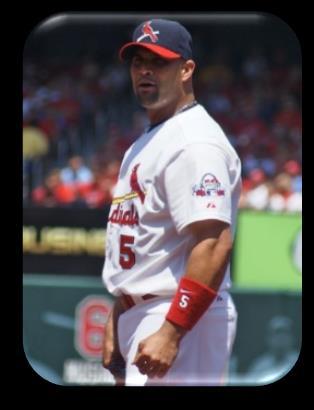
Waino! Not only did he disappoint me, but he disappointed 46,882 of us who paid to attend this game, at the time the second largest crowd in Busch Stadium III history. Although, Wainwright can rest a little easier tonight knowing that only about half of those that paid remained to see the game after such a lengthy rain delay.


At least I got to see Kerry Wood throw two pitches in what would be one of the final 10 games of his career. It wasn’t quite as special as when I first saw Wood pitch in person (1998 playoffs at Wrigley Field), but this would have to do.
April 7, 2022
By Eric VickreyI have attended a few Opening Days in my nearly 40 years as a Cardinals fan, but none were more special than 2022.
When I bought tickets that year and planned my trip from Seattle to St. Louis, I
had no idea at the time I would be there to see the return of Albert Pujols. Witnessing the way he was embraced back into Cardinals Nation was incredible. Of course, seeing the Clydesdales and the Cardinals Hall of Famers wearing their red jackets was equally special. And the icing on the cake that day was a Cardinals win!
[Editor’s Note: The Cardinals beat the Pirates, 9-0.]
March 30, 2023
By Bill MarstonNot only had I never been to a St. Louis Cardinals home opener, I didn’t have a big interest in attending one. I love going to Busch Stadium to see the Cardinals play because I like watching baseball, and
I’m a diehard Cardinals fan. But I don’t need big crowds with pomp and circumstance; I just want to watch a game. Given a choice, I’d probably take
tickets to the second game of the season over the opener.
That all changed on Thursday, March 30, 2023. My friend, Ian, who played on the high school baseball team that I coached in 2005 and went on to have a nine-year career as a minor-league umpire, had received tickets from his friend, Dan Iassogna, the home-plate umpire for that afternoon’s home opener. Ian couldn’t get off work, and his brother couldn’t use the tickets either, so they offered them to me. I might not have been looking for tickets to an opener, but I wasn’t going to turn them down either.
Figuring that traffic and parking downtown would be crazy, my wife and I rode the Metrolink train to the stadium. We found our seats that were on the lower level and about even with first base just in time for the pre-game activities. I might not be into over-thetop hype, but there was something pretty special about witnessing the festivities firsthand for the first time. Watching the Clydesdale’s pull the wagon around the track followed by the parade of players being driven to home plate for their introductions, and seeing the Cardinals legends in red jackets, all while listening to the playing of the Budweiser jingle about 834 times was actually exciting.
Being a part of non-stop cheering from over 47,000 Cardinals fans was pretty special. Just when I thought it was done and we’d get to some baseball, Adam Wainwright was announced as the singer of the National Anthem, much to the surprise of his teammates as well as the fans. He nailed it.
TheCardinalslostthegametotheTorontoBlueJays, 10-9, the first of 91 losses in a disappointing season. Agamethathadthepotentialofbeingafun,exciting, come-from-behind win ended as a heart-breaking loss when the Cardinals blew the lead twice in the last two innings. A game that lasted more than 3½ hours (so much for the new speed-up rules) on top of the pregame festivities made for a long, but entertaining, afternoon.
One other cool thing, because I was in the umpirepass section, I sat near the wife of first-base umpire Scott Barry. In addition to the seat she was sitting in, she had the ticket for the seat in front of her, so that she could have a clear view of her husband at first base. When someone tried to sit in that seat, she talked to them nicely for a bit and then made them move.


NowthatI’veexperiencedaCardinals’homeopener, I think I might have to do another one!
April 15, 1924: The St. Louis Cardinals – destined for a sixth-place finish with a 65-89 record – started the season on a positive note. Trailing the Chicago Cubs 5-3 in the bottom of the ninth, the Cardinals rallied for three runs on three singles and the Cubs’ fifth error of the game. The winning run scored on a walk-off hit by Howard Freigau.
.424: Rogers Hornsby was 2-for-5 on opening day, on his way to setting the modern-day record for batting average in a season of .424. The Hall-of-Fame second baseman was a Triple Crown winner in 1922 and 1925 and was the Cardinals’ player-manager for their first World Series championship in 1926.
The Bob Broeg SABR Chapter held their Hot Stove event on February 3, 2024, or ‘SABR Day’ in enlightened circles. An annual tradition for over thirty years, the event features guest speakers, trivia, and lunch. This year, The McPherson, an event space in the Central West End neighborhood of St. Louis, hosted. The venue, in a renovated historic chapel constructed in 1916, now hosts weddings and other special events. The buffet lunch provided was excellent and with full bellies, the attendees were ready for an afternoon of great baseball talk.

Boehringer and Simontacchi both related stories from their careers, guided by great questions from Karraker. They then discussed the modern game and how it has changed in the relatively brief time since they played. Both gentlemen were candid in their opinions of what changes were good and bad and were especially critical of the lack of playing experience of coaches in major league baseball today. It was a lively discussion and all three guests answered questions and were available after the event for further discussion.
Vice President Ed Wheatley tapped into his extensive contacts to arrange the guests for the event. He secured Randy Karraker, Brian Boehringer, and Jason Simontacchi. Karraker,alocal radio sports talk personality, has been the lead host in various radio programs in either morning or afternoon drive time slots. Boehringer, from the St. Louis area, was primarily a relief pitcher during his ten-year career and wonaWorldSeries ringas amemberofthe1996 New York Yankees. Simontacchi is one of a handful of players to play in the independent Frontier League and advance to the major leagues and played with the Italian team in the 2000 Sydney Olympics, pitching the team to a win over South Africa.
Karraker started the program relating a humorous anecdote about working with Bob Broeg. He noted he had the unenviable task to edit Broeg’s often colorful and divergent remarks to fit in the time allowed for the radio segment. He gave his thoughts on the upcoming Cardinal season and then transitioned into a moderator role, leading a discussion with Boehringer and Simontacchi.
After the panel, the James Rygelski Award was presented to Brian Flaspohler for his research topic, “Comparing Win Shares to WAR.” The award, named for past SABR member James Rygelski, who appreciated original baseball research, is presented each year to the best presentation at the James Rygelski Research Conference, annually held at Webster University. Flaspohler becomes the first two-time winner of the prize.
Member Mark Stangl won the 2023 Hot Stove trivia quiz. His ‘prize’ was to prepare 2024s trivia. He put together a list of questions focused on the 1964 World Series winning St. Louis Cardinals. Robert Tiemann, who recently wrote a book about the 1964 St. Louis Cardinals, won the quiz, surprising no one!
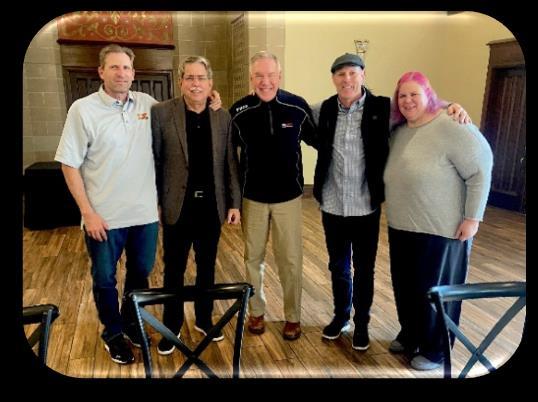
Left
All-in-all, it was a great event. Special thanks to Ed Wheatley for securing the guests and the venue and the entire Bob Broeg Chapter officer slate for doing a great job all year on the monthly meetings and special events!
 Reviewed by Bob Giovanni
Reviewed by Bob Giovanni
This is a book I felt I would enjoy since I am a strong Cardinal supporter, and a very big fan of Whitey Herzog. Whitey had done a great deal to changethe cultureofthe team after a lost decade of losing and poor management decisions. My hope was that the culture change, and its instigator, would be rightfully acknowledged in this book. With his accurate re-telling of what happened in 1982 and why, Eric put everything in its proper perspective.
He set the table for the story of the ’82 team by thoroughly explaining what happened to the franchise throughout the 1970’s: the bad management decisions, the missed opportunities on the field, the losing culture that festered through the drug-induced lack of effort performances. He then explained the rebuilding process that took place from Whitey’s hiring until the ’82 season began.
The rest of the book chronicles the 1982 regular season, the playoffs, and the World Series. The highlights ofthisaregreat gamesummaries andshort tidbits of info that made the reader become a part of the story. However, the best aspect of this story was the brief biographical data on all the principal characters in the championship season - from the owner and management staff to the manager and players,evendownto theClubhouseguy. Thosebios really draw the reader in to the point where you feel you know everyone involved; they weren’t just people you read about.
The story has the Happy Ending of Victory in the World Series. This was a very thorough and enjoyabletellingofhowthe1982 St. Louis Cardinals became world champs. And that is where the book shouldhaveended. However,the authorchoseto add an Epilogue to the story. A telling of what happened in succeeding years. He shouldn’t have bothered; what he did was water down everything he spent so much time building up, leaving the reader on a low note instead of a high.
I would highly recommend this book; just don’t bother reading the Epilogue.
142: Prior to the Cardinals’ April 4, 2024 game against the Miami Marlins, the Cardinals have had 142 home openers, and have a record of 76-65-1. In 1882, they won their first opener, 9-7, against the Louisville Eclipse
35: The team they have played the most is the Pittsburgh Pirates. The Cardinals have won 19 of the 35 games against the Pirates.
32: Second on the list is the Chicago Cubs, who the Cardinals have played 32 times and won 17 of those.
In honor of the Michigan Wolverines 2023-24 college football championship, and one of their best fans, Bob Broeg Chapter President Allison Levin, this article will review the career of Michigan athlete
Elmer Gedeon and take a brief look at three other members of the 1939 Michigan baseball team: Walter Peckinpaugh, Forest Evashevski, and Leo Beebe.
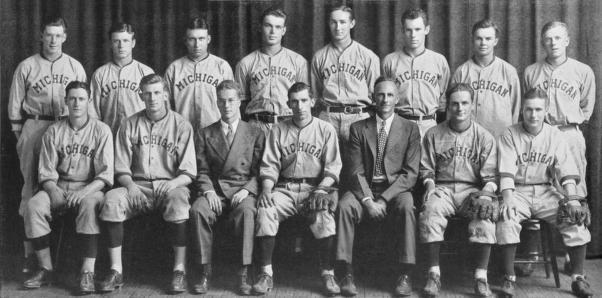

Elmer was the only member of the 1939 Michigan baseball team that reached the major leagues. Less than four months after hegraduatedfromMichigan,Gedeon appeared in five games as an outfielder for the Washington Nationals (Senators). At Michigan he also participated in football and track, and he was most successful at track. A lanky 6’4” he was a top notch short-distance hurdler and was under consideration for the 1940 US Olympic team in the 110-meter hurdles, but the Olympics were cancelled due to World War II.
Apparently, a local Washington D.C. umpire named “Bottle” Cox was on hand for this game and recommended Gedeon to the Washington Nationals.


Ultimately Gedeon chose baseball over track. As a senior first baseman in 1939, Gedeon batted .320 (32-for100). He played one of his best games for the Wolverines against the University of Maryland on April 15. Gedeon had a triple and a homer to lead Michigan to a 6-0 victory.
Gedeon signed with Washington on May 11, 1939, but asked the team not to disclose the contract until after June 1, so he could finish his collegiate career. Washington complied, withholding Gedeon’s contract from the league office until June 3.
Gedeon began his professional career with the Orlando Senators of the Class D Florida State League. In 67 minor-league games, he hit .253 and stole 15 bases. But on August 21 Commissioner Landis declared Gedeon a free agent because his May 11 contract was not submittedto the league office within 20 days per league rules. Washington was allowed to re-sign Gedeon upon promising not to violate the rule again. Although a
free agent, Gedeon agreed to honor his original contract and stay with Washington.
Possibly due in part to his loyalty in sticking with the Nationals, Gedeon was promoted to the big-league club in September 1939, and played his first game on September 18 against the Detroit Tigers. Manager Bucky Harris sent him intoright field as alate-inning defensive replacement; Gedeon made a diving catch of a Charley Gehringer liner, and struck out in his lone at-bat.
The following day Gedeon was in the starting lineup, batting sixth against the Cleveland Indians at Griffith Stadium. He recorded his first career hit on a leadoff single in the second inning against lefthander Harry Eisenstat He walked in the third inning, and scored his lone big-league run in the fifth inning when he reached base via a bunt single to load the bases with none out. Mickey Vernon followed with a two-run single that advanced Gedeon into scoring position Al Evans singled to score Gedeon. Early Wynn then bunted into a triple play to end the inning.
Gedeon struck out to start the seventh, and then singled against Joe Dobson in the eighth inning for his third hit of the day Washington won, 10-9. The Associated Press complimented Gedeon for making “a beautiful running catch on his only chance in the outfield.”
Pitchersheld Gedeon hitless in his threeothergames, two against Cleveland and one versus the Yankees. In his five-game major-league career, Gedeon was 3for-15 (.200) with three singles and a run scored. He walked twice and struck out five times.
In 1940 Gedeon hit .271 with 11 home runs for Charlotte in the Class B Piedmont League. He was called up to the majors again in September but did not appear in a game. In early 1941 he was called to
military duty. In May he joined the Army Air Corps and trained to be a pilot.
Gedeon joined the 586th Bomber Squadron, a part of the 394th Bombardment Group. According to the group’s historian, J. Guy Ziegler, he was “one of the most popular officers in the group.” On April 19, 1944, Gedeon flew his B-26 on a bombing run over a railyard in Belgium with “good to excellent results.”
The next day, April 20, Gedeon and 29 other Marauder pilots took off from Boreham Airfield in England. Their target was a German V-1 cruise missile site under construction in Bois d’Esquerdes, France. Gedeon flew behind group leader Captain DarrellLindsey.Theplanesreachedtheirtargetpoint at 7:30 p.m. Heavy German anti-aircraft fire punctured the sky.
Gedeon’s plane dropped its ordinance just before takingadirect hit. The cockpit areaburst intoflames. James T. Taaffe, Gedeon’s co-pilot that day, recalled, “We got caught in searchlights and took a direct hit under the cockpit. I watched Gedeon lean forward against the controls as the plane went into a nosedive and the cockpit filled with flames.” Some crew members jumped from the plane, while others died as the Marauder crashed into the ground. Of the seven crewmen aboard,Taaffewas thelonesurvivor. Along with Harry O’Neill, Elmer Gedeon was one of two major-leaguers killed in World War II. A threesport athlete at Michigan, record-breaking hurdler, major-league ballplayer and war hero, Gedeon was inducted into the University of Michigan Hall of Honor in 1983. According to a citation, “Elmer Gedeon is best remembered for his courage and the life he sacrificed for his country during World War II
Walter was the senior captain of the 1939 Wolverine baseball team. Normally a third baseman he was shifted to shortstop in his senior season. He was best
known for being the son of former major-league shortstop and manager Roger Peckinpaugh.
Roger Peckinpaugh first made history in September 1914 when, at age 23, he replaced Frank Chance as manager of the New York Yankees. He managed the Yankees to a 10-10 record to end the 1914 season. He still holds the record as the youngest manager in modern major-league history. Ten years later, he helped lead the Washington Nationals to their only championshipinWashington. Hewastheheroofthe 1924 World Series although he missed three games with an injury. He then won the American League MVP in 1925 while helping the Senators get back to theSeries. This timehewas thegoat, setting arecord by making eight errors in Washington’s seven-game loss to the Pirates.
One of Roger’s pitchers on the 1914 Yankees was Ray Fisher. Twenty years later, Roger would send his son Walter to the University of Michigan to play baseball for Coach Ray Fisher. After graduating from Michigan, Walter had a brief minor-league career. He hit .170 in 1939, splitting his time between New Orleans of the Class A Southern Association and the Opelousas (Louisiana) Indians of the Class D Evangeline League. In 1940, Walter appeared in 12 games for the Saginaw Athletics of the Class C Michigan State League, batting .263. That ended his professional baseball career.
Forest was a catcher on the 1939 Wolverines, but he was best known for being the star quarterback on the Wolverinefootballteam. Asquarterbackandcaptain of the 1940 Wolverines, Evashevski’s leadership brought the 7-1 Wolverines a #3 ranking in the final AP poll, and his blocking helped halfback Tom Harmon win the Heisman Trophy. From 1952-60,
Evashevski was the head football coach at the University of Iowa, and in 1958 his Hawkeyes went 8-1-1 to win the Big Ten. They defeated California in the Rose Bowl and were voted national champions by the Football Writers Association of America. Evashevski was voted into the Michigan Hall of Honor in 1990.
Leo BeebeA senior catcher on the 1939 Michigan baseball team, Leo Beebe was a fine basketball player, baseball player, and scholar. In 1939 the Dearborn resident won a western conference medal for proficiency in athletics and scholarship. Beebe would go on to work for the Ford Motor Company. In the mid-1960’s he was transferred to Switzerland
to lead Ford of Europe. Henry Ford II assigned him to take over Special Vehicles to make the Ford race teams a winning operation. He did it, as featured in the film Ford v Ferrari He may even have orchestrated the finish where all three of the Ford cars finished the 1966 Le Mans race together.
Sources: baseball-reference.com; newspapers.com; Wikipedia; SABR Bios on Elmer Gedeon (by Glen Sparks) and Roger Peckinpaugh (by Peter M. Gordon).
I have been a lifelong St. Louis baseball fan. I grew up with my grandparents telling me stories of Cardinal greats Stan Musial, Kenny Boyer, and Bob Gibson. My dad told me stories of how he was an
umpire at Heine Miene field, calling balls and strikes on Mike Shannon. He went to CBC high School with Dick Musial, and CBC in Memphis with Tim McCarver. I have been collecting Cardinals baseball
cardsand memorabiliaforyears,and Ioftenbragthat I am the “Biggest Cardinals Fan in the State of Arizona ”
I rarely heard stories of the St. Louis Browns. Growing up in Arizona, no one ever spoke of George Sisler, Ken Williams, or Roy Sievers. The Browns were always an answer to a trivia question that I always knew. That was about it. Over the years I began collecting Browns memorabilia, but I was not familiar with the history of the Browns. The more I researched them, the more I wanted to learn.
I found out about the St. Louis Browns Historical Society and reached out to them for more information. A gentleman named Bill Rogers called me, and we talked for hours about the Browns and the Fan Club. From this point on, I was motivated on finding as much information as I could on the American League team from St. Louis. While on our yearly baseball pilgrimage to St. Louis, my wife Amy and I enjoyed lunch with Bill at Frankie G’s. Again, we talked for hours. I then reached out to the president of the Browns Historical Society, Ed Wheatley. I began to collect every book that told of Browns history, and I would talk or text with Bill every week.
Bill Rogers directed me to look at different Browns teams and players.HerecommendedEdMickelson’s book “Out of the Park”, which is one of the most honest baseball books I have read. The following year, Amy and I planned our trip around the Browns yearly luncheon, where I met other Fan Club members. I saw my friend again and met Bill’s wife. As time went on Bill’s health began to decline, and our discussions and text messages became more spread out. I would often text him, and not get a response for weeks. When I heard from Bill, he just wanted to talk about Browns history and the players he knew and remembered.
I got the idea of sending text messages to Bill daily about Browns history. Beginning in 2019, I would text him one fact a day of something I learned. It could have been about a game where the team or
player reached a milestone. It could have been about aplayer whohadabirthdayonthatday. It could have been a picture of a new piece of memorabilia I had acquired. Every day I sent him a piece of Browns information. At times I would not hear back from him for weeks, and later months. Every time he responded it motivated me to find out more to share with him. Astimeprogressedmy texts startedgetting longer.
Bill passed in March of 2022. I did not find out until weeks after, but I kept sending my messages. However, after his passing, I was lost. Those daily text messages had become a part of my daily routine, and now I had no one to share them with.
I developed the idea of building a daily blog/website which would continue the same stories I told Bill. I started researching everything I could find on the Browns. I had already researched and developed a Browns “Top 100” list, which I presented to the Historical Society in February of 2022. I continued researching every player, every game, every transaction, and every fact about the Browns I could find. I have filled index cards, compositions books, and spreadsheets to organize all the information.
On January 1st of this year, I launched a website that I have called “St. Louis Browns 764” (www.stlouisbrowns764.com). I named it after the 764 players that played for the Browns. Every player is given equal representation, from the legends everyone knows, to the players who were around just long enough to wear the jersey and see action. The goal is for every player to be honored at least once, and for the spirit of the Browns to be remembered. I think Bill would be proud.
[Editor’s Note: Jeff Huelster is undoubtedly the biggest Browns fan in Arizona. Click on the link to his website in the previous paragraph which contains an incredible amount of information about the Browns. Jeff updates the website regularly with fun facts about players and events corresponding to the current date, as well as links to his blog.]
27 members of the Bob Broeg Chapter of SABR took part in our 2024 St. Louis Cardinals prediction survey. Here is the breakdown of the results. Look for the names of the best prognosticators in our end-of-season newsletter.
1. How many wins will the Cardinals have?


2. Will Manager Oliver Marmol be fired before the end of the season?



3. Will Masyn Winn be sent to the minors at some point in the season?



4. Who will lead the Cardinals in home runs?



5. Who will lead the Cardinals in RBI this season?




6. Who will lead the Cardinals in stolen bases?



7. Will these three outfielders, Nootbar, Edman, and Walker, combine for more home runs than Shohei Ohtani?


8. How many wins will Sonny Gray have?




9. Will Lance Lynn and Kyle Gibson combine for 15 or more wins?
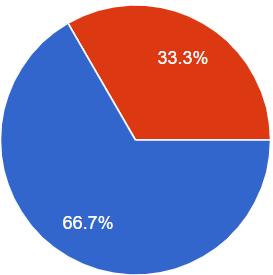

10. Will Victor Scott II be on the roster any time before September?



11. How many saves will Ryan Helsley have this year?

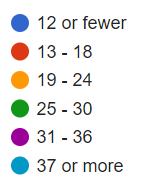
12. How will Willson Contreras hit this year?

He will hit at least .265 and at least 20 home runs
He will hit at least .265 but less than 20 home runs
He will hit below .265 with at least 20 home runs
He will hit below .265 and less than 20 home runs


13. Will Myles Mikolas lead the team in innings pitched?


15. Will the Cardinals attendance be above or below 3.3 million?

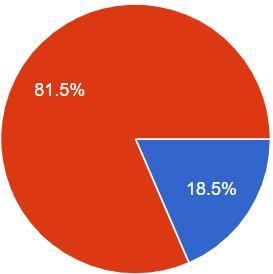


14. Which of the following four players will appear in the most games for the Cardinals in 2024?
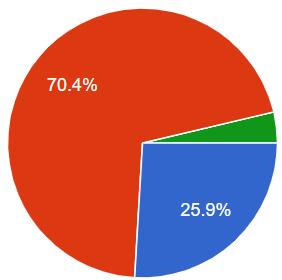

10: Bob Gibson was the Opening Day starter for the Cardinals 10 times. That’s more than any other pitcher in St. Louis history.
6: Adam Wainwright is second on the list with six Opening Day starts.
At the Bob Broeg Chapter monthly meeting in March, 16 attendees filled out ballots with their predictions of which teams will be: the division winners, wild card winners, appear in the ALCS and NLCS, appear in the World Series, and be the 2024 Champions. Most members also completed a more
difficult task in predicting each league’s MVP, Cy Young, and Rookie of the Year. Here are tables of the predictions. [Editor’s Note: Predictions on some ballots were omitted, so not every column totals to 16. Wild Card predictions were made for three teams in each league.]
My good friend, Dennis, and I participate in fantasy baseball drafts all winter long. During these drafts, we end up discussing various players’ projections. Most of the time, we agree. Sometimes, we do not. This year, we decided to put them in a table and compare the results at the end of the season.
[Editor’s Note: Jeremy and Dennis agreed on 12 of the 22 statements. Jeremy challenges you to make your own over/under predictions on these items. We will check back with Jeremy in October to see how he did.]
Jeremy DennisRobbie Ray 3.5 starts OVER UNDER
Tyler Kinley 14.5 Saves OVER OVER
Austin Martin 99.5 PA UNDER OVER
Jorge Mateo 14.5 SBs OVER OVER
Nelson Velazquez 29.5 HRs UNDER OVER
Walker Buehler 24.5 starts UNDER UNDER
Steven Kwan 4.5 HRs UNDER OVER
Dodgers 104.5 Wins UNDER UNDER
Cardinals 84.5 Wins UNDER UNDER
Ivan Herrera 49.5 GS at C OVER UNDER
Zack Thompson 7.5 GS UNDER OVER
Victor Scott II 9.5 SBs UNDER OVER
Willson Contreras 64.5 RBIs OVER OVER
Sonny Gray 9.5 Wins OVER OVER
Andrew Kittredge 4.5 Saves OVER OVER
Oliver Marmol 4.5 ejections UNDER UNDER
Judge+Soto 74.5 HRs UNDER OVER
Jordan Walker - 20/20? (OVER = over for both) UNDER UNDER
Corey Seager 500 PA UNDER UNDER
Walker Buehler 129.5 innings OVER UNDER
Shane Baz 79.5 innings OVER OVER
Nick Martinez 13.5 starts UNDER OVER
Photo Credits
1 Steve Gietschier – Photo by Allison Levin
2 Rich Zucker’s ticket – Photo by Rick Zucker
3 Lou Brock – courtesy of sabr.org
4 Fred Snodgrass – courtesy of sabr.org
5 Bobby Bonds – courtesy of sabr.org
6 Willie McGee – courtesy of sabr.org
7 Bob Tiemann’s ticket – Photo by Bill Marston
8 MarkMcGwireJon GudorfPhotography,CC BY-SA2.0 <https://creativecommons.org/licenses/by-sa/2.0>,via Wikimedia Commons
9 George W. Bush – Photo by Eric Draper, whitehouse.archives.org, Public Domain
10 Jeremy Gibbs – property of Jeremy Gibbs
11 Kerry Wood – courtesy of sabr.org
12 Albert Pujols – Photo By Barbara Moore - https://www.flickr.com/photos/shgmom56/3854091492/, CC BYSA 2.0, https://commons.wikimedia.org/w/index.php?curid=99175249
13 Scott Barry Photo By Keith Allison from Hanover, MD, USA, CC BY-SA 2.0 <https://creativecommons.org/licenses/by-sa/2.0>, via Wikimedia Commons
14 Hot Stove Luncheon – Photo by Jeremy Gibbs
15 Hot Stove Panel – Photo by Jeremy Gibbs
16 Runnin’ Redbirds – Photo by Bill Marston
17 1939 Michigan Wolverines – photographer unknown, retrieved from University of Michigan – Bentley Historical Library. “The Bentley Historical Library provides access to this image for educational and research purposes.” – Fair Use
18 Elmer Gedeon – courtesy of sabr.org
Sources for By the Numbers
Baseball Almanac
https://www.baseball-almanac.com/opening_day/odschedule.php?t=SLN
Baseball Reference
https://www.baseball-reference.com/teams/STL/opening.shtml
https://www.baseball-reference.com/boxes/SLN/SLN192404150.shtml